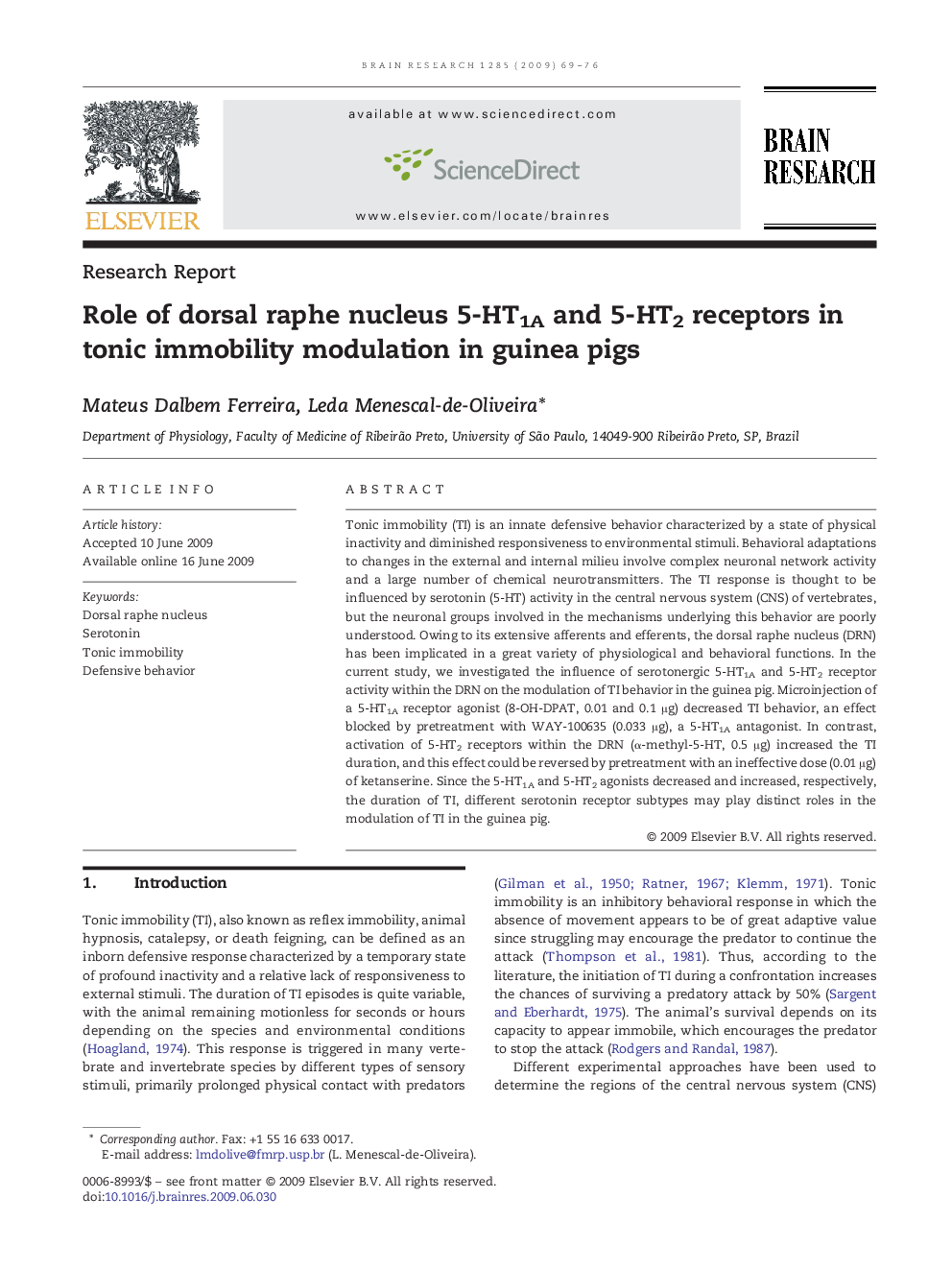| کد مقاله | کد نشریه | سال انتشار | مقاله انگلیسی | نسخه تمام متن |
|---|---|---|---|---|
| 4328032 | 1614154 | 2009 | 8 صفحه PDF | دانلود رایگان |

Tonic immobility (TI) is an innate defensive behavior characterized by a state of physical inactivity and diminished responsiveness to environmental stimuli. Behavioral adaptations to changes in the external and internal milieu involve complex neuronal network activity and a large number of chemical neurotransmitters. The TI response is thought to be influenced by serotonin (5-HT) activity in the central nervous system (CNS) of vertebrates, but the neuronal groups involved in the mechanisms underlying this behavior are poorly understood. Owing to its extensive afferents and efferents, the dorsal raphe nucleus (DRN) has been implicated in a great variety of physiological and behavioral functions. In the current study, we investigated the influence of serotonergic 5-HT1A and 5-HT2 receptor activity within the DRN on the modulation of TI behavior in the guinea pig. Microinjection of a 5-HT1A receptor agonist (8-OH-DPAT, 0.01 and 0.1 μg) decreased TI behavior, an effect blocked by pretreatment with WAY-100635 (0.033 μg), a 5-HT1A antagonist. In contrast, activation of 5-HT2 receptors within the DRN (α-methyl-5-HT, 0.5 μg) increased the TI duration, and this effect could be reversed by pretreatment with an ineffective dose (0.01 μg) of ketanserine. Since the 5-HT1A and 5-HT2 agonists decreased and increased, respectively, the duration of TI, different serotonin receptor subtypes may play distinct roles in the modulation of TI in the guinea pig.
Journal: Brain Research - Volume 1285, 18 August 2009, Pages 69–76